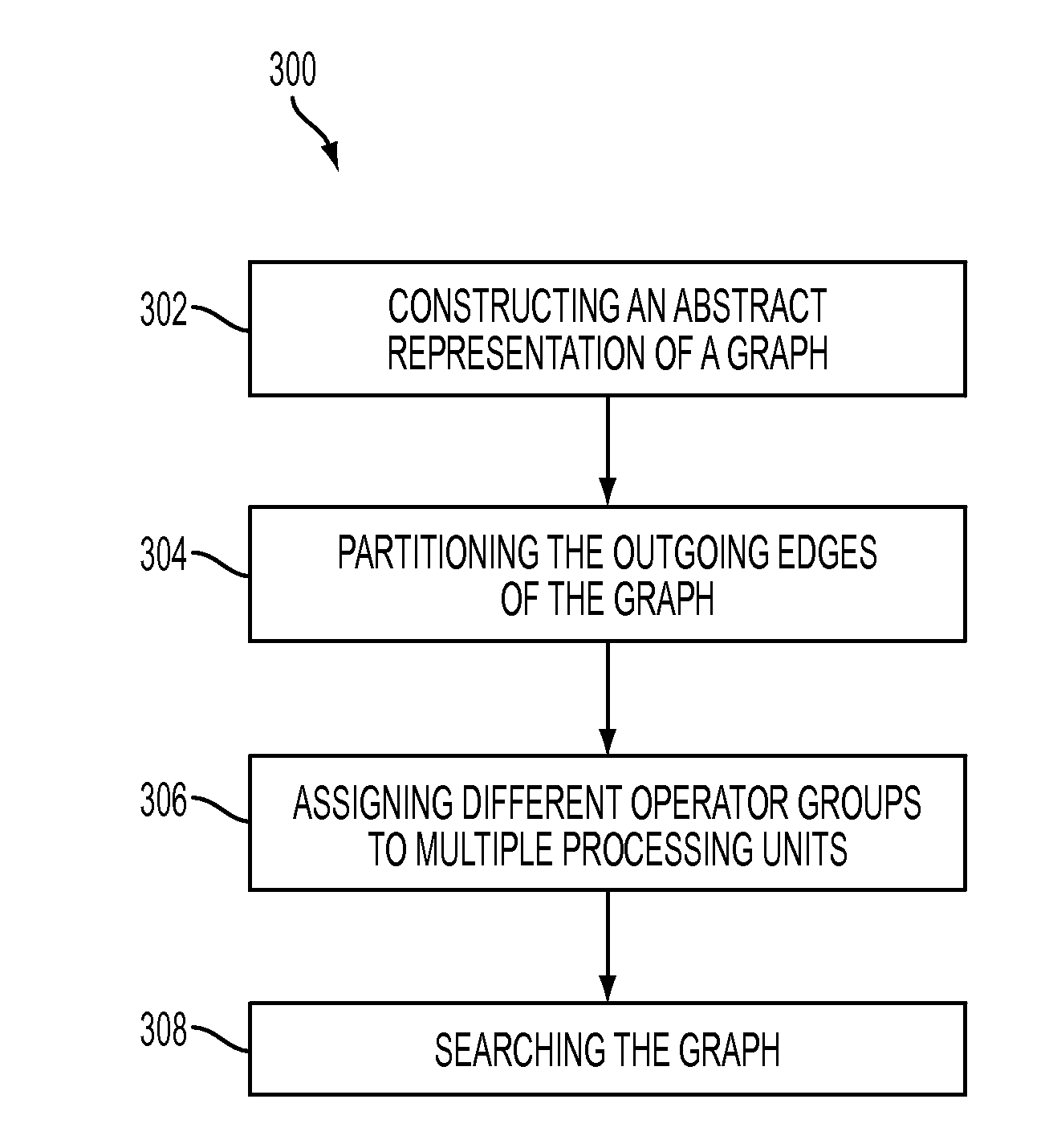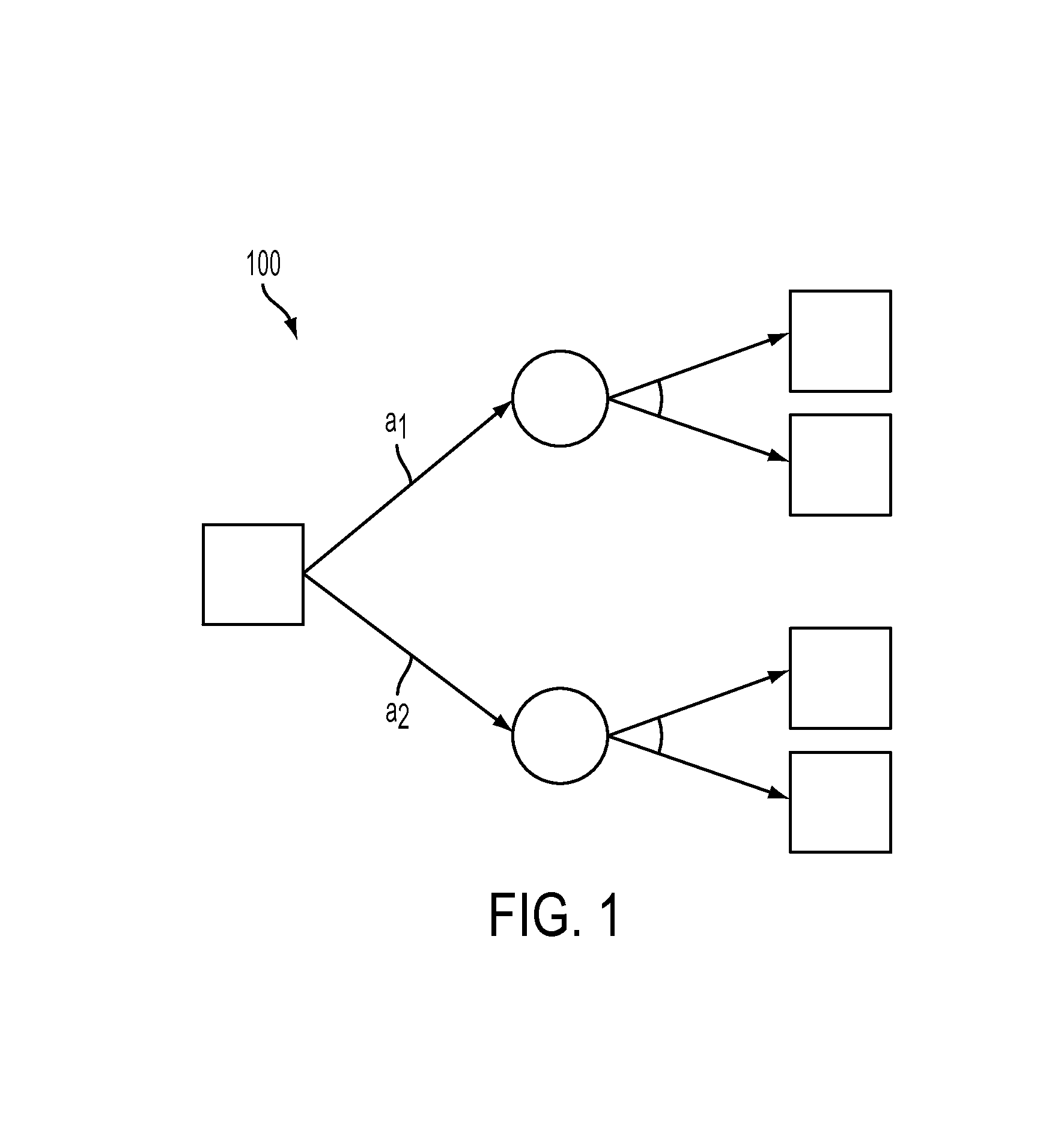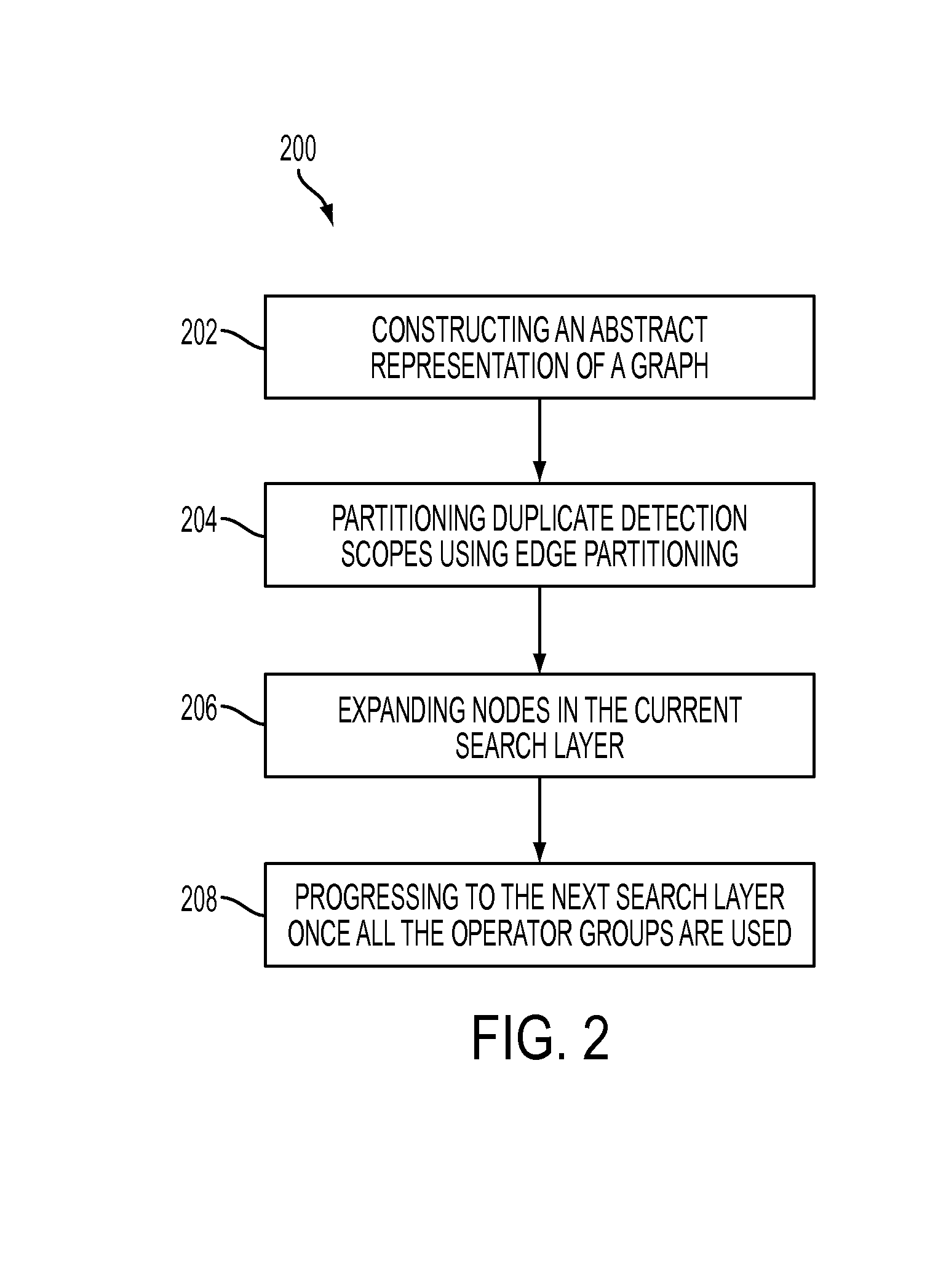System and method for parallel edge partitioning in and/or graph search
a graph search and parallel edge technology, applied in the field of graph searching, can solve the problems of combinatorial explosion of search space, inability and long time-consuming to find optimal or even approximate solutions
- Summary
- Abstract
- Description
- Claims
- Application Information
AI Technical Summary
Benefits of technology
Problems solved by technology
Method used
Image
Examples
Embodiment Construction
[0044]The following disclosure describes an efficient technique for parallelizing AND / OR graph searching as it relates to planning for non-deterministic problems (see graph 100 of FIG. 1). The to-be-described technique, called herein PEP-AO*, is based on extending Parallel Edge Partitioning (PEP), an advanced graph search algorithm, for use with AO* algorithms in the solving of non-deterministic problems, as described for example in AND / OR graphs.
[0045]While existing PEP implementations addressed a certain set of problems, these implementations were only applicable to OR graphs. PEP uses both state-space abstraction, operator-space abstraction, and provides immediate duplicate detection, and low synchronization overhead. PEP subdivides the duplicate-detection scope of a node (or a set of nodes that map to the same abstract state) into multiple partitions, one for each abstract edge that connects an abstract state to one of its successors in an abstract graph. The duplicate-detection...
PUM
 Login to View More
Login to View More Abstract
Description
Claims
Application Information
 Login to View More
Login to View More - R&D
- Intellectual Property
- Life Sciences
- Materials
- Tech Scout
- Unparalleled Data Quality
- Higher Quality Content
- 60% Fewer Hallucinations
Browse by: Latest US Patents, China's latest patents, Technical Efficacy Thesaurus, Application Domain, Technology Topic, Popular Technical Reports.
© 2025 PatSnap. All rights reserved.Legal|Privacy policy|Modern Slavery Act Transparency Statement|Sitemap|About US| Contact US: help@patsnap.com



